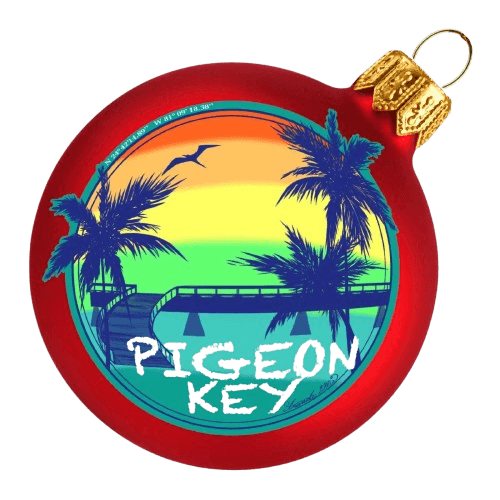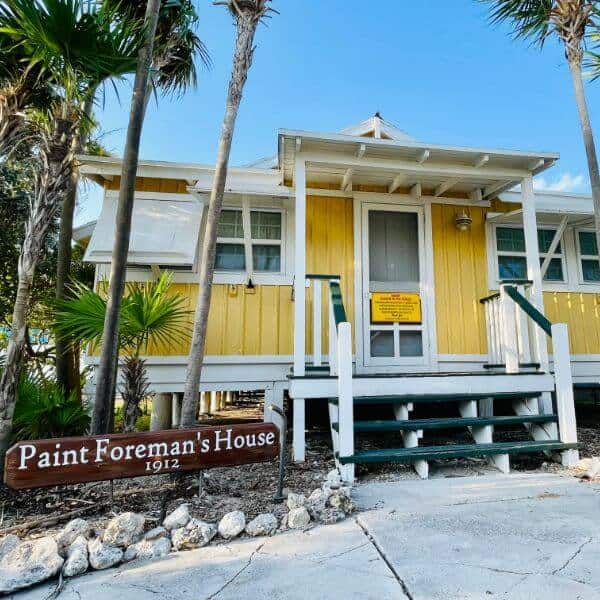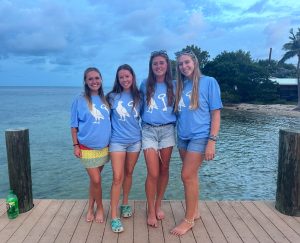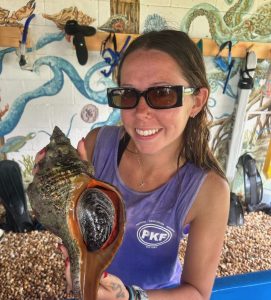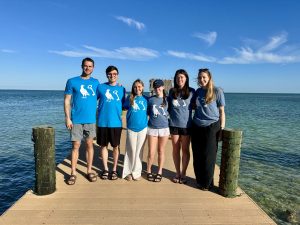The Paint Foreman’s House, a large wood-framed rectangular building, on Pigeon Key was originally built in 1908 as a kitchen, then repurposed to a house in 1912, and is one of the oldest buildings on the island. It featured board-and-batten style shearing on the exterior, and on the inside of the building, there are five rooms that once served as bedrooms, a living room, and a kitchen, connected by a single hallway.
Paint Foreman’s House, along with the other buildings on the island, are on the National Register of Historic Places in order to highlight and preserve their history. You can learn more about this building and see it up close on any of our three guided tours every day, but the interior of this building is currently closed to the public.
Set away from the other buildings on the island, it originally served as a large cookhouse and primary kitchen to feed over 400 men living in various tents and buildings while working on Pigeon Key for Henry Flagler’s Key West Extension of the Florida East Coast Railroad. Once the railroad extension of the FEC was officially complete in 1912, the island was transformed from a work camp into a maintenance camp.
The original kitchen was converted into the Paint Foreman’s house, where the Paint Foreman, John L. Bland and his family stayed. Not much is known about Bland and his family. The Paint Foreman himself was in charge of overseeing the painting of the original 7 Mile Bridge, which took about a full year to paint, and was done so for approximately 23 years.
Like most of the other buildings on Pigeon Key, Paint Foreman’s is raised up on five foot concrete pillars to allow for heat exchange during the warmer months, and for protection against high water levels during hurricanes. Standing outside of the house, you can see the raised cupola that has been boarded over, as well as odd patches in the roof. These patches cover what used to be holes where kitchen stove stacks passed through when it was used as a kitchen.
The building itself, along with others found around the island, is painted “Flagler Yellow”, which was thought to help boost worker morale due to it being a cheery and bright color. You can actually order the same color from most hardware stores! Inside of our island museum (the Assistant Bridge Tender’s House), you can see a piece of wood found inside of the Paint Foreman’s house with the original Flagler yellow color on it.
Today, the Paint Foreman’s House serves as a bunkhouse/dormitory for visiting student groups and summer camp children, and can sleep up to 31 students at a time. The small building attached to the side of the Paint Foreman’s House currently serves as our staff kitchen, where we prepare meals for visiting students and groups.
Written grants were approved by the state of Florida in order to re-roof both Paint Foreman’s house and our current kitchen. Accessibility ramps will also be installed around the island, specifically for the Bridge Tender’s House, Assistant Bridge Tender’s House, and the Section Gang. These grants allowed us to preserve the history of these buildings while increasing their accessibility for visitors and tourists. See you on the island!
